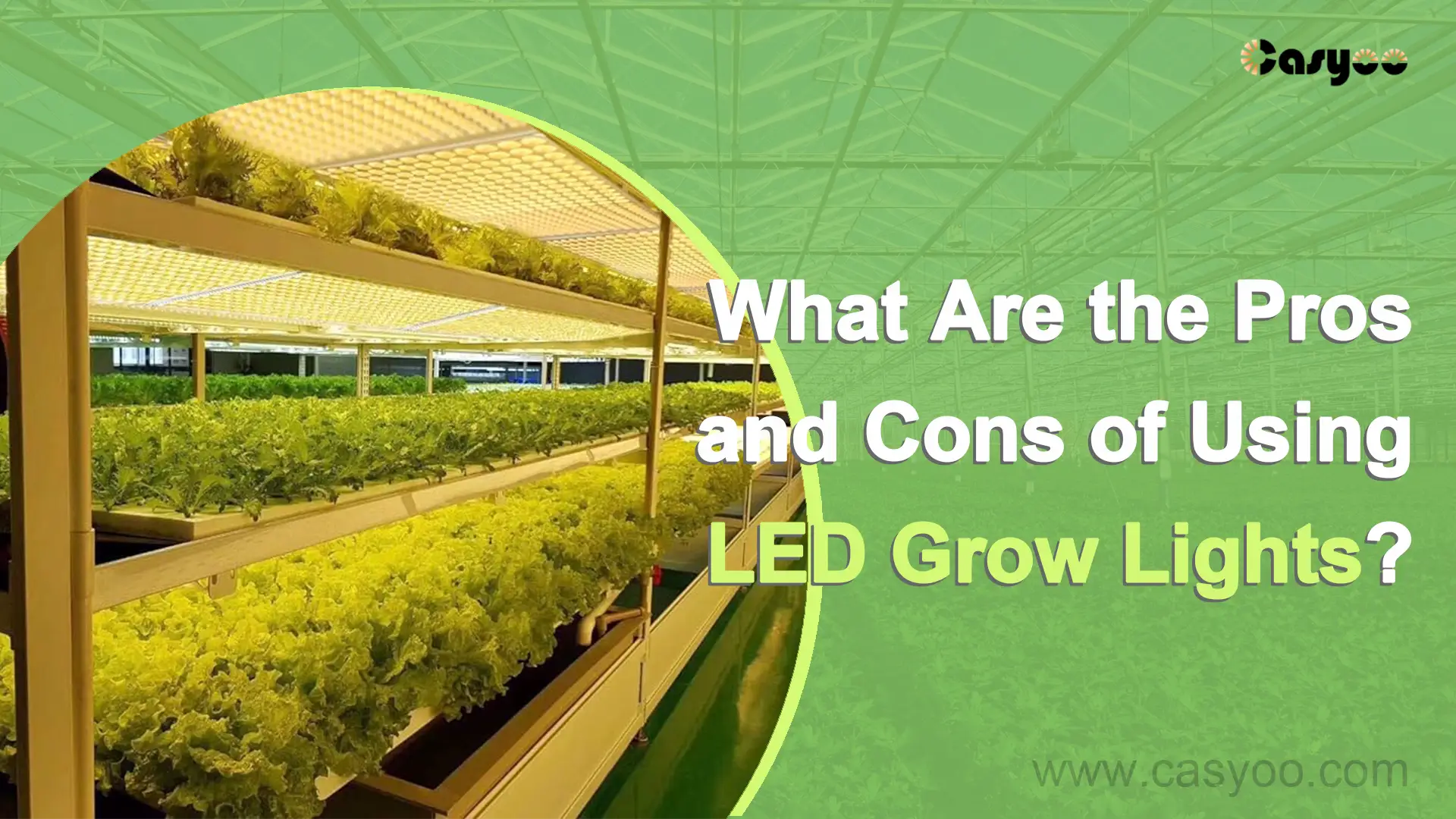More and more farmers are updating to LED grow lights due to the numerous benefits it provides. Before you buy an LED grow light for your gardens, let’s explore the key pros and cons of using LED grow lights!
What Are the Advantages of Using LED Grow Lights?
Energy Efficiency
Energy efficiency is one of the main benefits of LED grow lights. Conventional lighting, such as fluorescent or incandescent bulbs, uses a lot of electricity and frequently produces a lot of heat as a consequence. LED grow lights, on the other hand, are known for energy savings. LED lights are an environmentally friendly alternative for indoor agriculture because studies have shown that they may save up to 70% on energy consumption when compared to traditional lighting solutions.
Produce Very Little Heat
The high heat output of traditional grow lights, such as HID lights, might cause issues if your grow room isn’t properly ventilated. In addition to stressing out your plants, too much heat can also stunt growth and lower yields. In contrast, LED grow lights emit very little heat, which makes them a safer and more comfortable choice for both you and your plants.
Better Proximity
LED grow lights are less hot than HID bulbs, so you can put them closer to your plants. LED grow lights can be positioned even a few inches apart from the plant. Growers who have limited vertical growth space where lights can be installed would find this helpful.
Quick Harvest Cycle
LED grow lights can be used throughout the clock without significantly affecting the temperature. Without environmental feedback, indoor plants depend on you to identify the season. You can precisely adjust the color and the light duration to optimize the rate at which plants develop. Growing autoflowering plants under LED light allows for numerous harvests in a single growing season. Plants can have their flowering times changed, allowing you to boost yields.
Healthier Plants
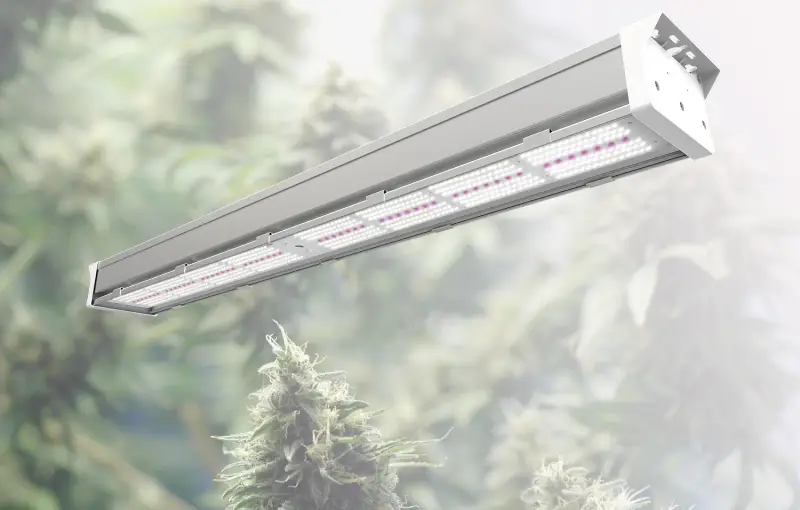
Although LED lights can produce UV rays, not nearly as much as other light sources do, and too much UV can be harmful to almost any organism that is exposed to the sun. Plants grown under LED lights typically have lower UV exposure, which makes them less susceptible to leaf burn and nutrient loss caused by damaged fan leaves. This means you can harvest healthier plants.
Sun-Like Spectrum
For plants, sunlight is a vital source of energy. In order to carry out photosynthesis and create food, green plants need energy from the sun. Nonetheless, it was not possible to guarantee plants constant exposure to sunlight. Shaded regions, changing climate, a nation’s latitude, and other elements might be to blame.
The best option for you is an LED grow light. It is able to provide a full spectrum that closely resembles sunlight. Furthermore, its wavelength and proportions are balanced. These elements are vital because they affect the growth rate, stretching, and photoperiodism of plants.
Customizable Spectrum
LED grow lights can provide customizable light spectrums. This enables you, whether you are producing flowers, herbs, or vegetables, to customize the light spectrum to the particular requirements of your plants. For instance, you can use a spectrum that is higher in red and blue wavelengths to support leafy growth during the vegetative stage and a spectrum that is higher in red and orange wavelengths to encourage more buds during the flowering stage.
Long Lifespan
Most LED grow lights available today have a 50,000-hour lifespan. In contrast, MH lights have an average lifespan of 10,000 hours, whereas HPS grow lights have an approximate lifespan of 16,000 hours.
Daisy-Chainable
In a daisy-chain configuration, a grower might plug in one bulb and then connect numerous more units in series with it. Setting up a timer for one plug is easier than using it for several plugs.
Make sure you don’t overload the electrical circuit when you daisy-chain lights together. The higher the device wattage, the fewer fixtures it can have daisy-chained together. The manufacturer will often specify the maximum number of fixtures that can be connected in a 120V or 240V system.
Customizable Designs
LED grow lights come in a variety of shapes, sizes, and styles. If your growing area is rectangular, you can also utilize LED grow lights with a rectangular shape, such as multi-bar grow lights and panel lights. For vertical farming, LED grow light bars can be placed at the bottom of the shelf to provide light for seedlings and young plants. It can also function as supplemental lights in greenhouses.
Waterproof and Dustproof
Many LED grow lights have dustproof and waterproof ratings, which are commonly represented by the Ingress-Protection code, or IP for short. Many IP65-rated fixtures on the market are waterproof and dusttight. The fixture is “dust tight,” as indicated by the first number, 6. The second value, 5, indicates that there will be no negative impacts on the fixture from water projected from a 6.3 mm nozel in any direction. Certain fixtures may only have an IPX4 or IP63 certification, meaning that they can only be sprayed or splashed with water, respectively, because they are not as watertight as other fixtures.
While most home growers might not be as concerned about this, professional growers tend to favor waterproof fixtures.
Environmental Friendly
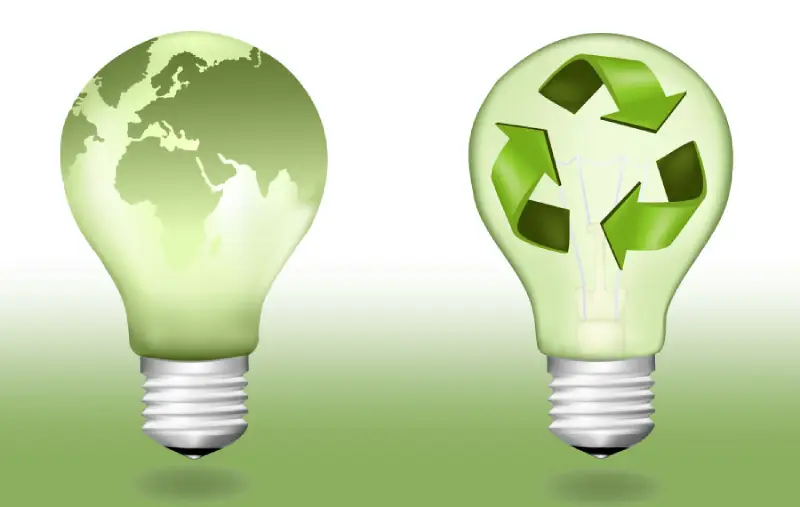
More and more consumers and businesses are using green products these days. They are safer for both humans and the environment. Yes, LED grow lights are eco-friendly products.
LED grow lights don’t have any mercury in them. It is therefore safe to discard or recycle. Many people choose LEDs over HIDs because burning HIDs releases a lot of hazardous mercury. Even if an LED grow light is accidentally broken, no hazardous substances are released.
Easy Installation & Maintenance
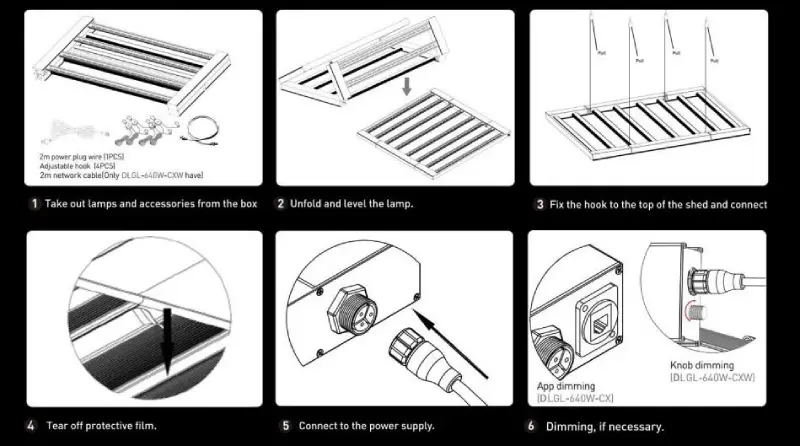
LED grow lights are straightforward to install because they are all-in-one package designs. All you need to do is plug the light, hang it, and maintain steady temperatures and adequate ventilation. You don’t need to hang the reflector, set up a ballast, and worry about the growing environment overheating like HID lights.
Also, compared to traditional grow lights, LED grow lights require less maintenance. They have a longer lifespan of 50,000 hours, which means operation for at least five years straight. Durability is further enhanced by the excellent efficiency and low energy consumption of LED grow lights.
What Are the Disadvantages of Using LED Grow Lights?
High Initial Costs
Many growers are turned off by the expensive initial expenditures of LED lights. But with LEDs’ excellent efficiency, purchasing an LED system will result in longer-term financial savings than purchasing a similarly powered HID system.
Too Much Blue Light Is Bad for You
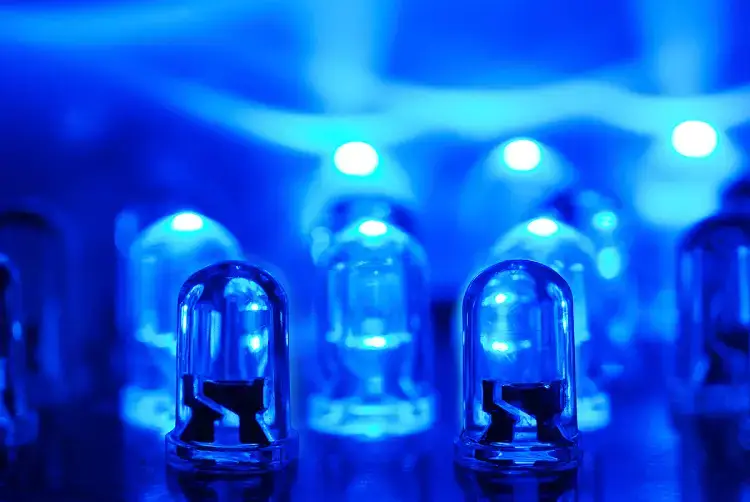
Blue light is ideal for your plants, especially during the vegetative phase. However, what about your eyes? Not in that way. Long-term exposure to blue light can damage your retinal cells.
Produce Little Heat: Although this is a benefit in many cases, you might need to add more heat if you are using LEDs to grow plants indoors in a cooler climate.
Cheaper LEDs May Not Work Well
There are many solutions available on the market for anyone wishing to buy LED lights at a lower cost. Sadly, a lot of cheaper LED grow lighting solutions can’t deliver the best outcomes. Cutting costs now could expose your plants to temperature swings that could cause leaf burns, which could result in a host of problems for the health of your plants, such as low immunity to infections and nutrient deficiencies.
Final Thoughts
All in all, as a technology of the future, LED grow lights provide numerous advantages. That being said, they also have several drawbacks. However, as manufacturers work to improve the efficiency and affordability of their lights, those shortcomings are rapidly going away.
At Casyoo, we provide innovative lighting solutions in LED grow lights and are professional with over 17 years of experience. We always put quality on the top, and the LEDs undergo strict quality tests before delivery. Come and get the best LED.

